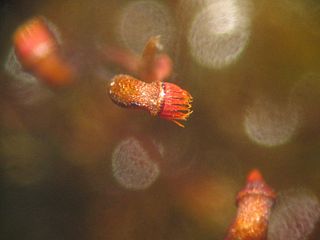
The Bryopsida constitute the largest class of mosses, containing 95% of all moss species. It consists of approximately 11,500 species, common throughout the whole world.
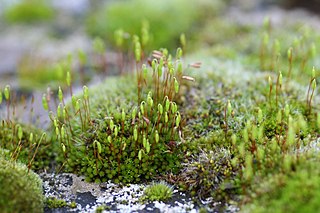
Bryales is an order of mosses.
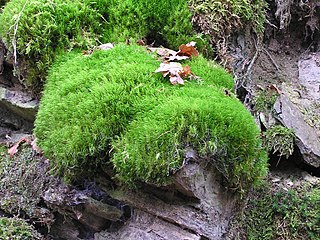
Dicranales is an order of haplolepideous mosses in the subclass Dicranidae.

Fissidentaceae is a family of haplolepideous mosses (Dicranidae) in the order Dicranales, with a single genus, Fissidens. It was formerly placed in the now-obsolete order Fissidentales.
Pseudoditrichum is a rare North American genus of haplolepideous moss (Dicranidae). It is the only known genus in its family (Pseudoditrichaceae), and there is only one species in the genus. Pseudoditrichum mirabile has been found only in a small area along the Sloan River near Great Bear Lake. This is in the Northwest Territory in northern Canada, only a few kilometers south of the Arctic Circle.
Scouleriaceae is a family of haplolepideous mosses (Dicranidae) in the order Scouleriales. It comprises two genera, Scouleria and Tridontium.
Chrysoblastella is a genus of haplolepideous mosses (Dicranidae) in the monotypic family Chrysoblastellaceae. The genus was previously placed in the family Ditrichaceae.
Hypodontium is a genus of haplolepideous mosses (Dicranidae) in the monotypic family Hypodontiaceae.
Erpodiaceae is a family of haplolepideous mosses (Dicranidae) in the order Dicranales. It consists of six genera.
Rhachitheciaceae is a family of haplolepideous mosses (Dicranidae)s in the order Dicranales. It consists of seven genera.

Rhabdoweisiaceae is a family of haplolepideous mosses (Dicranidae) in the order Dicranales. It consists of 16 genera.

Ditrichaceae is a family of haplolepideous mosses (Dicranidae) in the order Dicranales.
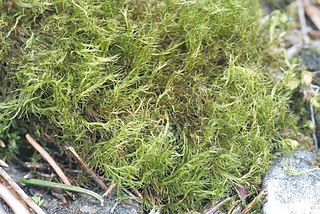
Flexitrichum is a genus of haplolepideous mosses (Dicranidae) in the family Flexitrichaceae.

Distichium is a genus of haplolepideous mosses (Dicranidae) in the monotypic family Distichiaceae.
Timmiellaceae is a family of haplolepideous mosses (Dicranidae). It contains two genera, Luisierella and Timmiella, that were formerly place in family Pottiaceae.
Catoscopium is a genus of haplolepidous mosses (Dicranidae) in the monotypic family Catoscopiaceae .
Micromitrium is a genus of haplolepideous mosses (Dicranidae) in the monotypic family Micromitriaceae . The genus Micrometrium was previously placed in family Pottiaceae in order Pottiales.
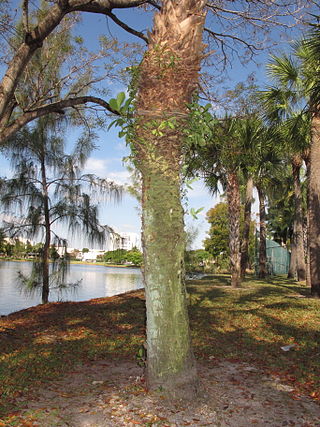
Octoblepharum is a genus of haplolepideous mosses (Dicranidae) in the monotypic family Octoblepharaceae . The genus Octoblepharum was previously placed in family Calymperaceae.
Saelania is a genus of mosses in the monotypic family Saelaniaceae in subclass Dicranidae. The genus was previously placed in family Ditrichaceae. Saelania is named after Finnish botanist Thiodolf Saelan.
Serpotortella is a genus of haplolepideous mosses (Dicranidae) in the monotypic family Serpotortellaceae in the order Pottiales.







